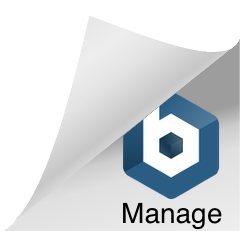Content
This is one of the most well-known benefits of mobile devices, and it allows for enterprises to perform remote working using mobile technology. Employees can take work out of the office by using mobile devices, which is an advantage that traditional desktop computers and workstations. If your company encourages employees to get out of their office every once and a while, they can still perform essential business tasks using mobile devices while away from their desks. Creating a mobile app is a sure way of staying competitive and securing a strong presence in your industry.
Before we dive into the technology picks, you might be wondering why you should even bother installing business apps on your phone. This information may be different than what you see when you visit a financial institution, service provider or specific product’s site. All financial products, shopping products and services are presented without warranty. When evaluating offers, please review the financial institution’s Terms and Conditions. If you find discrepancies with your credit score or information from your credit report, please contact TransUnion® directly.
Provide Your Customers With Value
There’s already a slew of ways to increase customer engagement with your business. Email marketing is a tried and true method, as is social media, but neither of those mediums is as personal or direct as push notifications.
Buffer allows you to connect all of your social media platforms and even drag and drop between them in your schedule to publish the same content across sites. With the right apps, your smartphone could be your new secret weapon. And, as a platform that helps small businesses around the world stay connected and productive, we know just the tools you need in your pocket. In addition to several useful project management features, Wrike allows you to request changes and make comments on image, video or PDF files.
Are you looking to automate some of your core business processes—and save yourself time and money in the process? Some companies may be resistant, and even fearful, of change, especially when it comes to Certified Public Accountant technology. But taking advantage of new innovations—in particular, mobile technology—can help ensure your company doesn’t fall behind. The great thing about choosing Glip for your communication platform?
Apps Increase Customer Loyalty
Android and iOS apps can keep the conversation going on mobile devices. Mobile devices, as their name indicates, are mobile – meaning they can go anywhere.
Is a website cheaper than an app?
Creating a website is often cheaper and takes less time than creating an app. However, an app can give your business unique advantages you simply can’t get from a mobile-friendly website.
Mobile apps can be used to acquire both top-of-the-funnel and bottom-of-the-funnel users. Learn which experiences work best with your customers and unlock higher user engagement, retention, and conversions. It can be difficult to take a critical view of your business and understand how it might translate onto mobile. Instead, try and think of an organic way that your business could be extended through mobile.
It also gives you the option to set up automated workflows, for example, if you want to send email notifications to yourself when a bill the business receives exceeds a certain amount. A growing trend for people to have their devices within arms reach at all times, means you can get closer to your customers, and your company is always available to them. The Swedish furniture retailer Ikea has also transformed customer experience with a clever solution to an age-old problem. For customers struggling to imagine how a piece of furniture might look, or fit, into their home, the company has developed Ikea Place.
#5 Customer Service & Support
There are apps that have a video camera synced with your doorbell so you can see who is at your front door when the bell rings. If an app user walks within a few blocks of your location, they’ll receive a notification about your lunch special.
For instance, OpenTable built its overall business model around the same principle. Rather than calling a cafe or restaurant for a table, it is possible to book it with less than five clicks on its platform.
Plus, with whatever version you choose, you’ll have access to the mobile QuickBooks app, which is one of the top-rated small business apps on the Apple App Store. Everything from TVs to crockpots are connected to the internet, turning it into a web that transcends beyond a website. Internet-of-Things means that mobile apps will be able to connect with more devices and more customers. This interaction allows the collection of data, which can help make life more efficient. And because it’s completely free to use, Wave is a great option for small businesses.
If you’re hoping to attract new customers, increase sales, build your brand image, or improve your customer experience, the answer is yes. Maintaining communication between your employees and departments is vital for enterprises. Obviously, mobile devices make communicating easier for employees, especially phones. This can apply to both personal communications and work-related discussion,. Several apps are designed specifically to integrate with other business technologies to help workers talk about projects or workflows.
Today’s teams are often distributed, mobile and want the freedom to complete tasks or check in as needed on mobile devices. When choosing a service, a strong mobile presence is critical for avoiding hiccups in productivity.
What is a business mobile app?
A mobile app is your customers’ portal to your business. Depending on the features it has, it can facilitate customer interaction with your brand, allow customers to make purchases and give them a line of communication with your business.
In an industry first, Nike is releasing a state of the art mobile application that allows customers to scan their own feet to find the perfect fit. Nike Fit uses the customer’s smartphone camera to create an ultra-precise scan, which collects 13 points of data and builds a map of both feet. Although every company’s digital transformation strategy will be different, mobile apps can be a game changer, and should be given serious consideration. Digitalizing your business offering, means that customers can now find and access your products or services from anywhere in the world. If you’re looking to increase conversions, mobile apps can be a great medium to push users down the conversion funnel.
Once realized, the internet of things will create a 24/7 ecosystem of information and accessibility that will transform how we go about our daily lives. Last but never least, the usage of mobile technology in the workplace fuels business to take part in the cloud. Mobile-integrated data software usage is also on the rise, as more businesses realize the importance of turning data actionable. This allows users to access real-time, live data updates and reports wherever they are, plus tailor feeds and filters to generate only the most relevant data streams on their devices. Yet mobile technology in businesses equips teams with resources to cut through the noise, simplifying our often data-saturated departments. Using smartphones and mobile devices for work purposes increases employee productivity based primarily on these devices’ familiarity and user-friendliness.
His vision, long term planning and sharp knowledge on latest technologies made this organization so successful and profitable in such a short period of time. Harnil ensures that the company gets up-to-date & latest knowledge on different technologies and trends in this competitive market. His problem solving skills and co- ordination abilities makes him favorable among clients and team members.
- Integrating as many social channels as you can, into your app can bring you an unexpected popularity.
- No matter what you sell, you can take a commanding role among your peers.
- For example, a cafe in California uses push notifications to encourage people to attend happy hour – offering 20% off drinks.
- Through a mobile app of your own, you are opening up a dialogue and an avenue for the customers to speak with you and help you understand where you have scope for improvement.
- Identify the upward trends, and adapt accordingly to meet the needs of your mobile customers.
- One of the key questions in business is ‘how you can give your brand a competitive edge’.
A well-designed mobile app can perform actions much quicker than a mobile website. Moreover, a study by eMarketer concluded that users spend more than 90% of their mobile time on apps as opposed to mobile web. For the last couple of decades, email has been the most widely-used business communication tool. As a result, email has lost the effectiveness it once had; its bookkeeping open rates and click rates have constantly dropped. Personalization is about offering tailored communication to users based on their interests, location, usage behavior, and more. Understanding user motives, the most popular features or pathways, and who your users are can help you make the right strategic decisions to focus your marketing efforts in the right place.
If people are talking about you or your products and sharing it on the social media, then their friends would know about you, be reminded of you, and interact with you. How many times do your customers come back to you after they have made their first purchase? This is an important aspect for the growth of your business and you must pay it due attention. It is easier to cultivate customer loyalty when you constantly 6 Benefits Of Mobile Apps For Small Businesses remind your customers of your existence and your offerings. Advertising is a crowded space which is constantly bombarding the users with visual imagery consisting of hundreds of thousands of brands and products. A mobile app forges a truthful and honest relationship between your business and your customers. The mere fact that your app is at their fingertips makes the customers feel more connected and loyal to you.
This will bolster your sales and you can access all the quick information at one go. The customers will schedule an appointment to visit your saloon and they don’t have to waste their time in waiting for other customers. Similarly, if there is a coaching class, it can send reminders to the students that they have to attend classes at the appointed time. Whether you have an Android or iOS app, the ratings and reviews certainly mean a lot in the Google Play Store or iOS app store.
Author: Mark Kennedy




